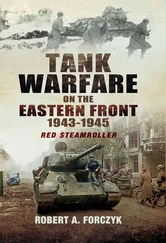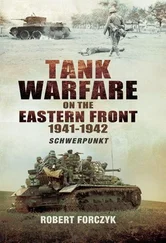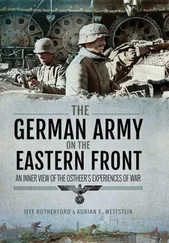Nothing is more violent than being in an intense firefight. Be it a soldier out in the field or in a tank having rounds bouncing off the tanks armour with an almost unbearable loud bang. Wondering which round will burst through the armour or immobilize the tank.
The crews quickly completed their maintenance even though it was not adequate. Max wanted to get the Tigers into a better position than they were now. Out in a wide-open space they could be subject to air attack. The Russian Ilyushin Il-2 Sturmovik, often bursting through the low cloud cover to bomb or strafe ground units. They were built in such numbers (42,330) the Ilyushin became the single most produced military aircraft design in aviation history. Thanks to the heavy armour protection, the Il-2 could take a great deal of punishment and proved difficult for both ground and aircraft fire to shoot down. It was reported that one Ilyushin had received more than 600 direct hits and having all its control surfaces completely shredded as well as numerous holes in its main armour and other structural damage. However, still managed to return home safely. The biggest issue with the Ilyushin was its accuracy, which was never really addressed until the end of the war. The German tank crews would much rather have an Ilyushin over them than a P-47. Especially the ones equipped with an early version of Napalm used later in WWII after the Normandy landings. This thick and oily liquid could seep into any ventilation duct or small crevice. When a salvo of these rockets hit, you would see a line of expanding fire emanating from the oily liquid that seemed to grow in intensity. It burnt very hot and could quickly cause a tank to be engulfed in a fierce blaze. Giving little chance of escape for the crew who were essentially cooked inside their tank if they did not suffer from asphyxia first.
The crews mounted up and began moving across the wide opening avoiding large holes and damaged artillery pieces. It was not that long before they were back into the relative safety of the forest. The tank tracks and transmission made some strange noises indicating that they were getting worn. Tigers were never designed to drive on long journeys. The engine and transmission only lasted around 600 miles before needing to be completely replaced. They had to be moved by rail from one operational area to the next.
Back inside their tanks, the crews felt slightly warmer being just a couple of degrees below freezing. A ceramic heater which took heat from the engine was the only warmth for the crews. It continued to provide heat for the tank for about an hour after the engine had been switched off. The temperature inside the tank would plummet overnight to well below freezing. The cold was a real problem for both men and machines. Adding to the difficulties of fighting on the Eastern Front during the winter months. The column continued back into the forest avoiding large holes caused by artillery shells and aerial bombardment for another two hours before finally emerging almost on top of a river. The river looked too deep for the tanks to forge and the only alternative was to follow the riverbank. This would require careful driving as it could be all too easy to slip into the river and more than likely the tank ending up on its side or worse still upside down. The terrain also meant no let up on the tired tanks, already battle worn. Max scoured the map and saw a bridge not that far away. The problem was that the map did not show if the bridge could take the weight of a Tiger rumbling over it.
The column of Tigers headed off once again along the riverbank encased in heavy snow. It was slow going, simply to avoid obstacles and the narrow gap between the edge of the river and a gully almost running alongside the thin ledge at the side of the river. As they set off down the riverbank a thick fog started to form, further adding to the difficulty of seeing ahead. The upside of the fog was that it would also aid in concealing the Tigers from Soviet ground and air forces.
The tanks engines roared as they struggled through some thick snowdrifts pushing vast mountains of snow aside as they ploughed through. This did nothing to aid in fuel consumption. To help balance out fuel consumption the lead tank was changed over with the other tanks following. The tracks on the tanks were getting more and more tired. It had been nothing more than sheer luck that a track had not broken or a transmission failure. All the crews could do was be as gentle as possible with their tanks and gently nurse them where they could get some much needed maintenance and fuel their tanks being three quarters empty. More fuel was used on rough terrain than on flat ground or even a road. On normal flat terrain, a Tiger did around 0.4 miles per gallon. This meant the 534-litre tank could travel around 50 miles before needing to be refuelled.
They could see the bridge in the distance it was a steel girder bridge with a wooden platform. The tank column stopped short of the bridge and halted for a few minutes, to undertake some checks before crossing over. They undertook checks on the running gear, surrounded by exhaust smoke and the swirls of fog. Max looked at the slackened track length, the worn link pins and the distortion to the drive wheel that had resulted from hitting a large tree in the forest. The Tiger could not take much more punishment but if the stuck with flatter terrain the track should hold together fine. Max had a quick discussion with Klaus. “Ja, die Titel werden nur um zusammen zu halten.” “Ja, ja,” said Klaus. All the crews mounted back up and moved towards the bridge.
The Tank column finally made it to the bridge. The steel girders looked strong enough to take a Tiger. This theory could only be put into practice by driving a Tiger over it. The bridge showed signs of small arms fire damage but no other damage after a quick inspection by Max and Hans, another tank commander. They mounted up and Max swung his tank to the right before heading over the bridge. The bridge grumbled slightly as the first Tiger went across, followed by the second and the third. As the third Tiger was very nearly across a loud crack almost like an explosion went off just behind the third Tiger. The steel girders had torn away from the connecting rivets. The bridge behind the Tiger collapsed into a heap of twisted metal. The third Tiger stood still for a matter of moments before the hull started to rise in the air and slipped backwards. There was nothing the crew could do as it slipped backwards into the cold and fast flowing river. The tank was a total loss, but thankfully the hatches on the tank burst open and the crew scrambled out and up the tank that was now half submerged and the barrel of the 88 resting on the final part of the bridge, which was still standing. The crew of the Tiger were spread about amongst the remaining Tigers with the driver sitting on the floor of Max’s tank. The fourth Tiger was now stranded on the other side of the river and would need to find another way to get across the river. There was not much Max could do put wish them all the best and continue. At least the fog would offer some cover for the lone Tiger. The lone tiger and its crew carried on down the side of the river seeing if it could find a way to cross and catch up with the rest of the column. However, by following the river the Tiger was taken further away from the column and towards an advancing group of T-34s.
The commander saw the origin of the shot, though, and called it out to the gunner. In a group of trees, where the fog had lifted. There was the unmistakable outline of a T-34 tank. The Tiger driver slowed and halted to give them firing stability. The gunner got a good aim on the T-34 before firing at the T-34. The shell hit the T-34, hitting its frontal plate and causing a plume of dark smoke to emit from the hole. Then, just up from the T-34, another two T-34s appeared. They moved to the right and seemed reluctant to engage. The Tigers 88mm gun made short work of two T-34s firing several rounds into both targets. Bits of metal were shaved off the turret as the Tiger’s round impacted on the turret. The T-34 turned to the right, before rolling over black smoke belching out of its exhausts. Another round hit the gun mantle with such force that it knocked the top surface of the turret completely off, exposing the commander who had been killed instantly when the shell had hit the tank. Another T-34 continued to advance towards them, they fired another round that went straight through the frontal armour and killed the entire crew inside in an instant. They Tiger was running low on ammunition as well as options.
Читать дальше












